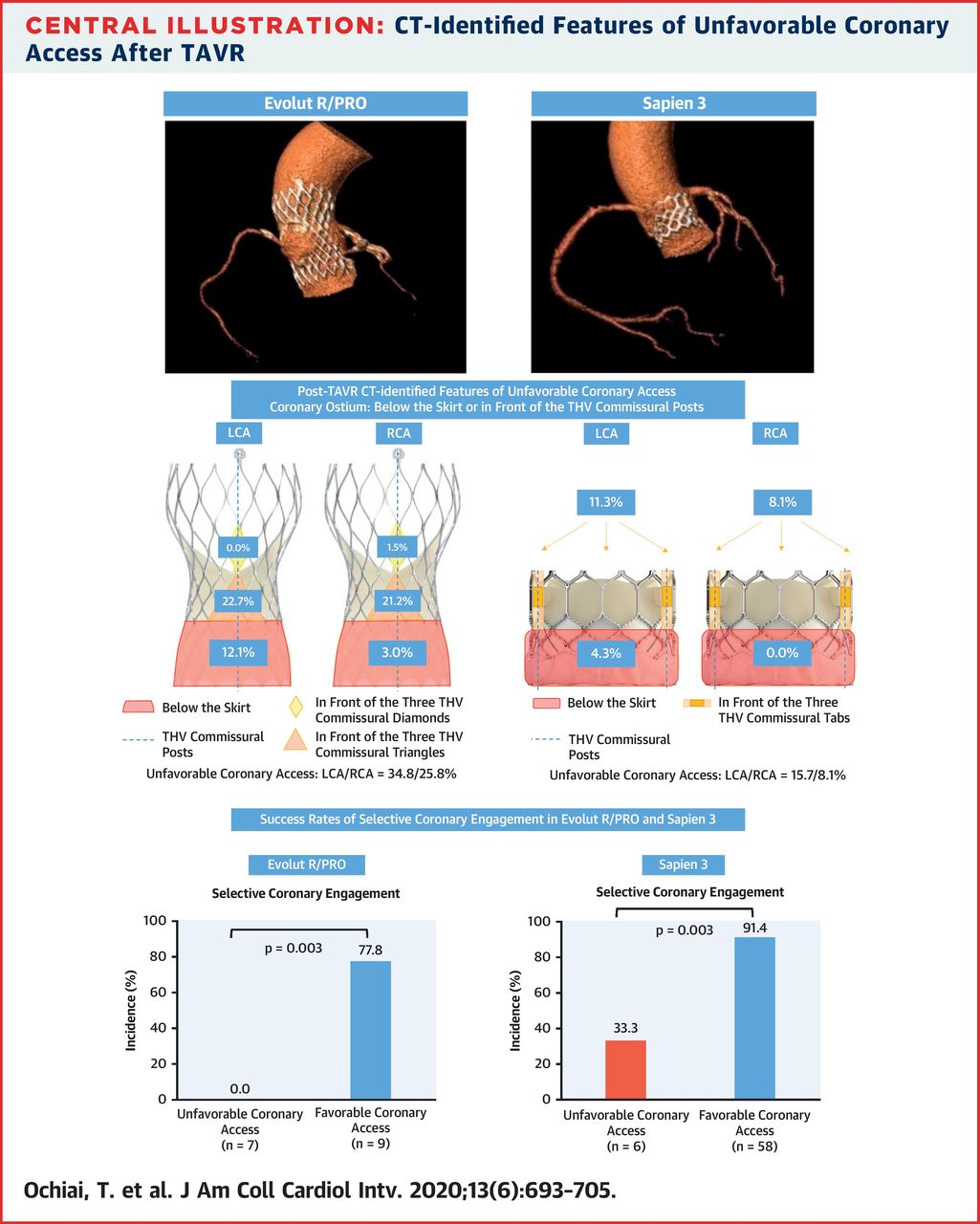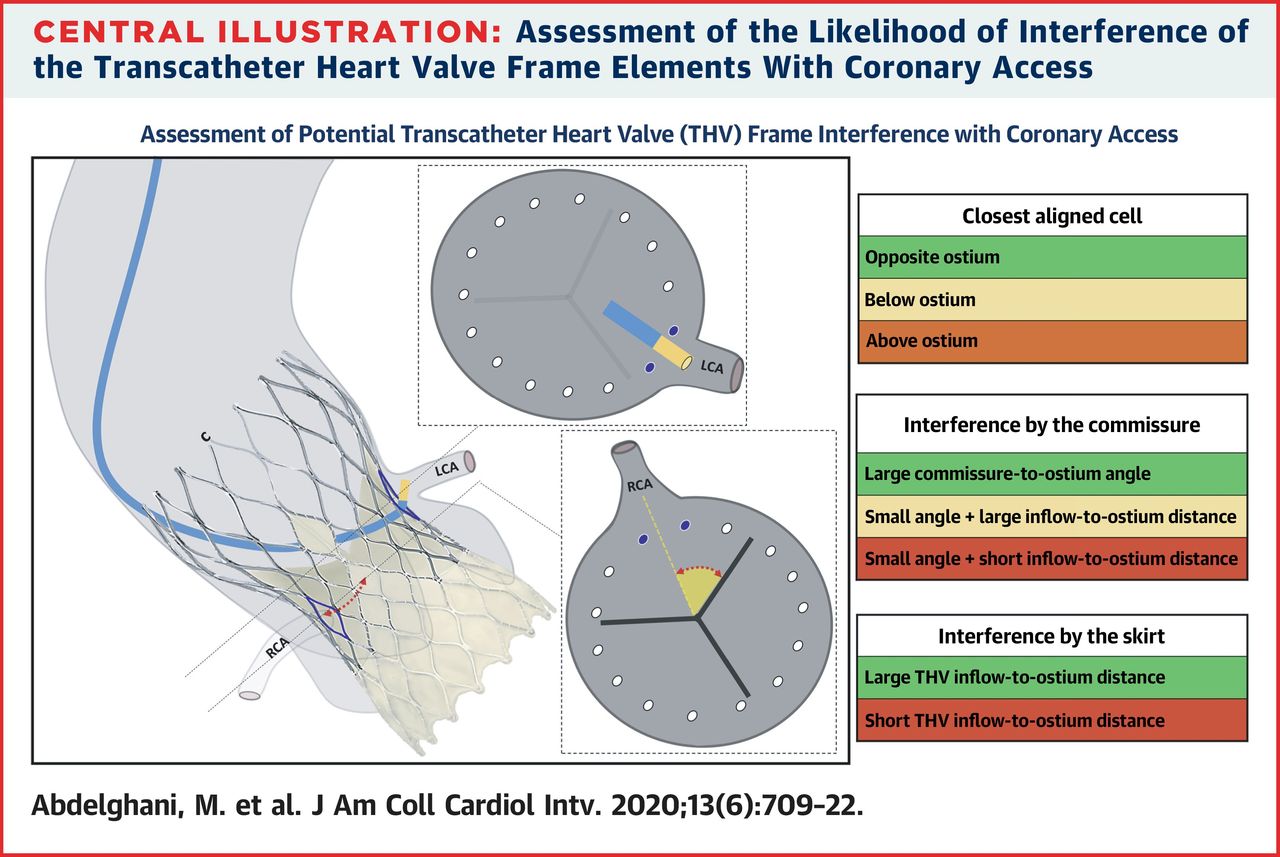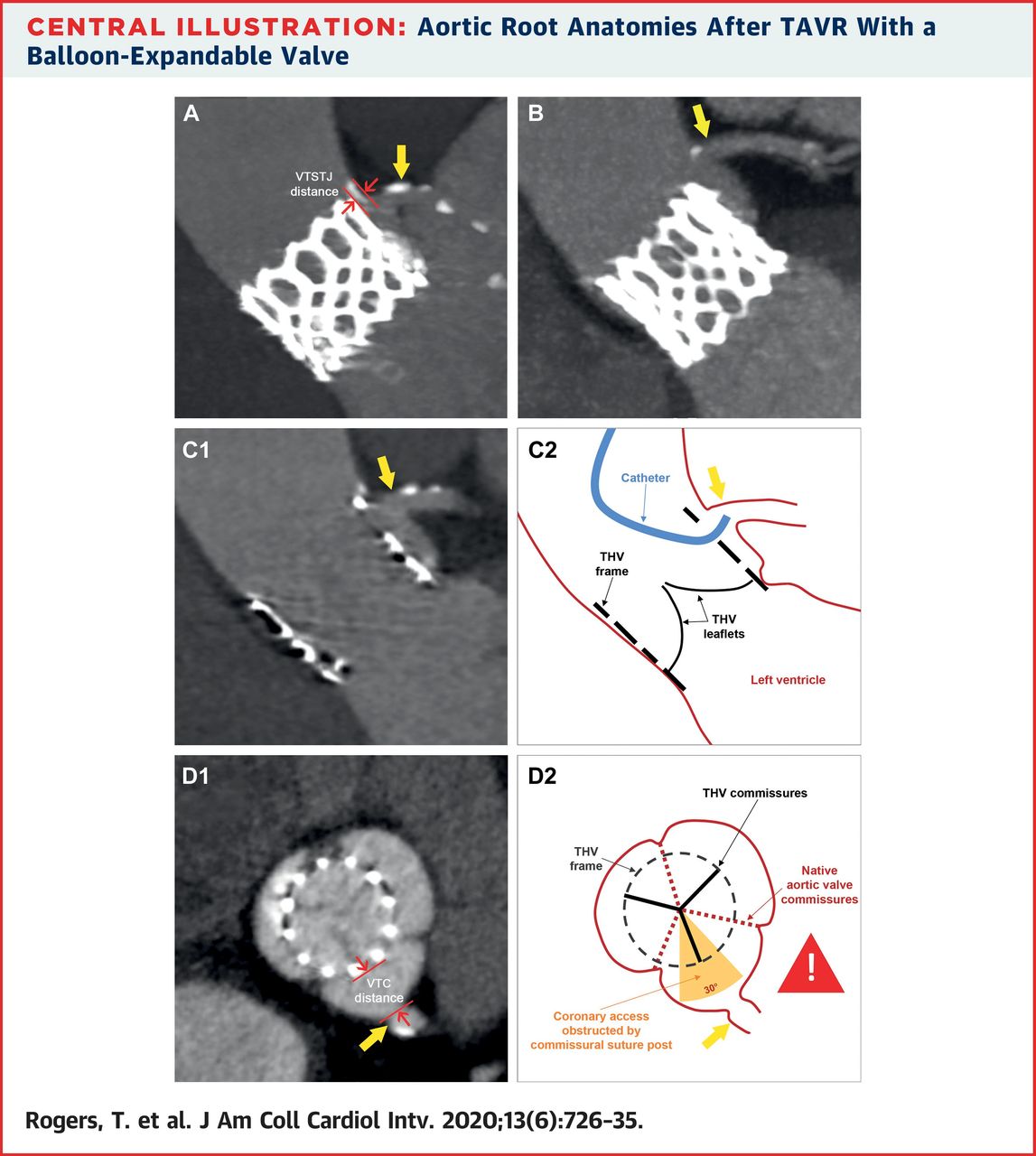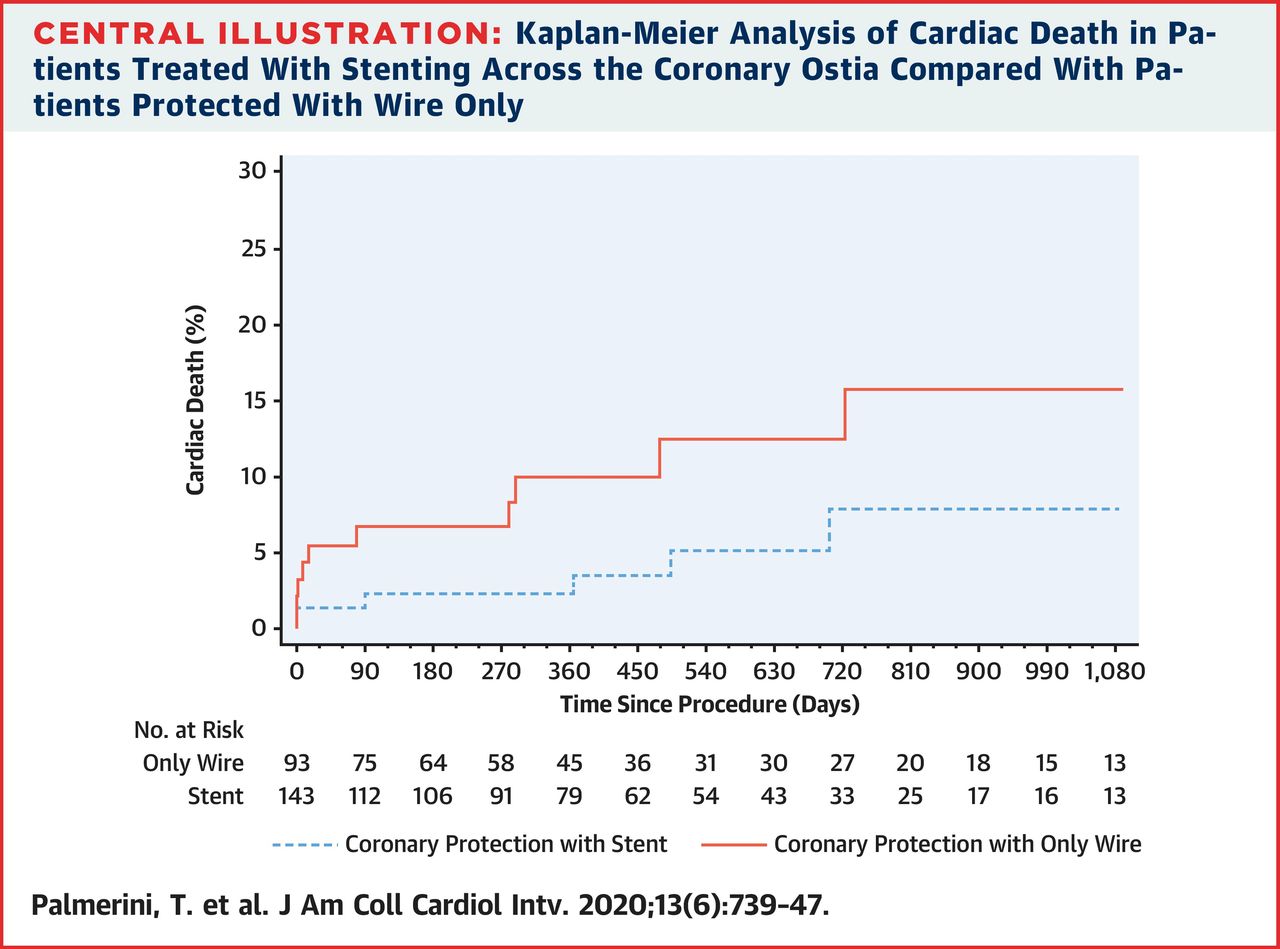
科学研究
Original Research
JOURNAL:CBSMD Article Link
CBSMD
1. “Coronary Access After TAVR” 介绍了真实世界中通过CT明确的TAVR术后冠状动脉通路不良(unfavorable coronary access)患者的冠脉介入成功率数据后发现:
1)TAVR术后冠脉通路不良患者的冠脉介入成功率低于冠状动脉通路良好的患者。Evolut R/Evolut PRO 组(0.0% vs. 77.8%; p = 0.003),SAPIEN 3 组(33.3% vs. 91.4%; p = 0.003) ;
2)提出了TAVR术中有助于保持良好冠状动脉通路的技术细节。

2. “Coronary Access After TAVR With a Self-Expanding Bioprosthesis: Insights From Computed Tomography”介绍了通过多层计算机断层CT观察到的经导管心脏瓣膜(THV)中位TAVR 30天后与左、右冠脉开口的相对解剖位置。

3. Low Risk TAVR试验 "Feasibility of Coronary Access and Aortic Valve Reintervention in Low-Risk TAVR Patients"指出TAVR治疗会对低风险患者的冠状通路造成影响, 或引发主动脉瓣再干预(TAVR-in-TAVR)时的冠脉阻塞。

4. “Coronary Protection to Prevent Coronary Obstruction During TAVR:A Multicenter International Registry”则比较了TAVR术后冠脉保护的两种方案,3年随访结果显示:
1) 通过支架保护冠脉开口后的心源性死亡率显著低于导丝保护后的心源性死亡率(7.8% vs. 15.8%, adjusted hazard ratio: 0.42; 95% confidence interval: 0.14 to 1.28; p = 0.13);且通过置入支架保护的TAVR患者的明确的支架内血栓发生率不高(0.9%);
2)通过导丝保护冠脉开口的患者需要预防延迟性的冠脉闭塞(delayed coronary occlusions),发生率为4.3%。
